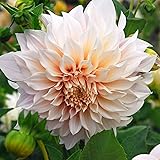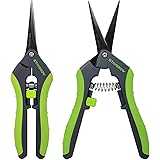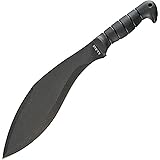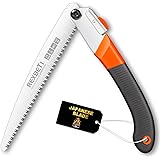How to build a hydroseeder!
Hydroseeding is a method of planting grass. When it comes to Hydroseeding, the unique thing is that this planting process is the spraying of seeds onto the lawn. You will mix the seeds in with water, fertilizer, and mulch. This mixture is available in the market, so you do not need to worry about mixing it properly.
The Hydroseeding process comes with multiple benefits. The most significant advantage of using this process is that it helps protect the soil, and nutrients mixed in with the water give the seeds optimal germination conditions.
So, how do you build a hydroseeder? The comprehensive guide below will take you through the necessary steps you require. Read on.
Necessary Equipment
For you to begin Hydroseeding, the basic material you will need is a truck and the hydroseeding machine. You will, however, need different sizes of equipment for different types of mixtures depending on the size of the property you are Hydroseeding.
The primary hydroseeding equipment are;
- 750-gallon tank
- 500 gallons of water
- 45 pounds of grass seed
- 10 pounds of all-purpose fertilizer
- About four bales of mulch
How To Build A Hydroseeder
Even though it sounds and looks technical, a proper guide will take you through to achieve impressive results with your hydroseeder. Let’s begin;
- Setting Up Your Motors
You will need 2 motors for the machine to function properly. The first motor is specifically for agitation. The motor needs to be a 2-inch trash pump. The motor inlet pulls the mixture from the bottom center and pumps it directly back to the tank passing through 5 agitation points. Also, the right side needs to be halfway from the top while the left side should be below custom fenders and 1 top front as bale buster.
The second motor is for spraying the slurry. This particular motor will need to be a 3-inch trash pump. Inlets to the pump need to be at the bottom middle section of the hydroseed tank.
- Mounting the Motors
Once you finish setting up the motors, you will need to mount them on the trailer. Use rubber spacers to decrease the vibration from the motors. The wheel covers must have custom bolts attached to them and have a high weight rating—dual 7500lbs Axels. You should also have an adjustable hitch mount to match the truck height.
You can consider an excellent option to install banjo open/close valves as required on both motors. The dual motors will allow you to spray your mixture while agitating it in the tank. By doing this, your hydroseeder will be able to run a much thicker mix and mulch fiber through a jet agitation, all the while maintaining the spraying pressure.
- Mixing
At this point, you can begin mixing. Make sure that you get a thick and even mulch mixture. We recommend that for every 2 bags of 3 in 1 hydro cover mix that included paper and mulch, you use 200 gallons of water.
You can now add 5lbs of 18-24-12 lesco starter seed, 11 pounds of GCI seed, and Humic 12 called for rates. This mixture will be good to cover about 2100 sq. ft. and is achievable if you set the pump to a little over the quarter throttle. To get a much thicker mix, set the pump to a higher throttle.
Types of Hydroseeding Units
When you begin Hydroseeding, you will need to select a hydroseeding unit that will serve you best. Below, we will look at how to set up two hydroseeding units.
Jet Agitated Hydroseeding Unit.
- You will need to fill the unit with about 3/4 full of water.
- Check your engine. Preferably, turn your engine on and let it run for at least 50 seconds. It would be best if you did this before you add the materials to be sure everything works properly. Consequently, open that valve and close all other valves for those units with a bale buster. If your unit has no bale buster, then you will need to open the agitation valve all the way while closing the valve going to the discharge hose.
- Ensure that you add the correct amount of hydroseeding mulch for your machine. When loading the machine, you should always start with the mulch then load the fertilizer and seed.
- You can now add any other materials you may need when Hydroseeding, such as tackifier and fertilizer.
- If your unit has a bale buster, then you will need to close the bale buster valve and open the agitation valve.
- Fill up with water. It is best to mix when the tank is completely full, but that does not mean you can’t mix your hydroseed in portions.
- Allow it to mix until there are no more clumps. This process should typically take no more than two minutes. Make sure that you close the agitation valve before you start sparing.
- When the tank gets to about 6 inches, you might begin pulling air. To prevent the pulling of air, make sure that you close the agitation valve completely.
Paddle Agitated Hydroseeding Unit.
- Like the jet agitated unit, the tank needs to be filled to about 3/4 full of water.
- Check your engine. We advise that you turn your engine on and let it run for at least 50 seconds. It would be best if you did this before you add the materials to be sure everything works properly. After finishing, you should disengage the pump. It is essential that you do not run the pump while mixing your products. When using the jet agitator machine, any clumps formed will float. However, with the paddle agitator machine, the paddles will pull any clumps formed to the bottom of the tank and into the suction lines, leading to clogging.
- Engage the paddles. While adding your materials, we advise that you run the engine at about half throttle. Doing so will slow the impellers allowing for a proper mixture.
- Ensure that you add the correct amount of hydroseeding mulch for your machine. When loading the machine, you should always start with the mulch then load the fertilizer and seed. With this agitator, you can add entire bundles straight into the tank.
- You can now add any other materials you may need when Hydroseeding, such as tackifier and fertilizer.
- Fill up the tank with water while running the engine at full RPM. Do this while engaging the paddles for a proper mix.
- It will be best if you let it mix until there are no more clumps. This process should typically take no more than two minutes.
- While the paddles are still engaged, open the bypass valve and engage the pump. For you to start spraying, you will need to close the bypass about halfway. We advise you not to engage the pump while the bypass valve is closed. The surge of pressure that will be generated can blow out the hose.
Spray Techniques
How you choose to spray your hydroseed is not important for the success of your lawn. With Hydroseeding, as long as you have materials applied somewhere close to the proper amount and make an even application, the odds of success are very high. That said, we will look at some of the most common spraining technics out there.
- A few people like to spray out
To get the buildup of a mulch layer, you can spray close to horizontal; this will give you better results compared to other techniques. For you to get a more comfortable way to hydroseed and get more control, you could put the hose over your shoulder.
- Some people prefer to spray down
You can achieve this by pointing the hose directly at the ground. The whole point of doing this is to bury the seed deeper into the soil compared to spraying out. Planting the seed deeper into the ground will allow the soil to retain water better. The drawback to this technique is that the mulch will also be buried deeper into the soil; thus, the mulch will not shield the soil from the elements.
- Other people prefer a combination of the two
You can achieve greater results by first pointing the sprayer down to get deeper penetration of the seeds. After this, you will make another pass while spraying out to build up a protective layer of mulch.
- Trimming
You will be able to do this by closing the sprayer a little over halfway and holding the gun close to the surface. It will be best if you point the gun vertically when trimming close to walks and buildings. By doing so, you will not end up splashing onto the surfaces.
- Use of a platform gun
If you are hydroseeding large open areas, it would be best to use a platform gun. The gun will help you do the job faster and with less effort. The downside is that the guns usually have a narrow spray pattern or a straight stream nozzle. This makes it difficult to work close to the machine.
Conclusion
See, there’s nothing complicated in building hydroseeder as long as you have a proper guide as above. Better yet, we also teach you about mixing loads in different units and spraying techniques for a healthy and attractive lawn. If you have enough time on your hands, consider building rather than buying a hydroseeder!
Are you interested in getting such content that ranks for your website? I can help you produce well-researched content in the gardening niche, and many other niches, at an affordable rate. I am a passionate gardener and gardening writer myself and I also work with several other writers and editors to produce content for my website and for clients. Reach me at p9mwangi@gmail.com, or check creativitypot.com where I offer my writing and digital marketing services.





